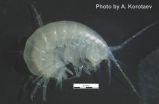(Press-News.org) New research finds that misdiagnoses lead to increased risk of incorrect antibiotic use, threatening patient outcomes and antimicrobial efficacy, while increasing healthcare costs. The study was published online today in Infection Control & Hospital Epidemiology, the journal of the Society for Healthcare Epidemiology of America.
"Antibiotic therapies are used for approximately 56 percent of inpatients in U.S. hospitals, but are found to be inappropriate in nearly half of these cases, and many of these failures are connected with inaccurate diagnoses," said Greg Filice, MD, lead author of the study. "The findings suggest that antimicrobial stewardship programs could be more impactful if they were designed to help providers make accurate initial diagnoses and to know when antibiotics can be safely withheld."
Researchers conducted a retrospective cohort study at Minneapolis Veterans Affairs Medical Center (MVAMC), evaluating 500 inpatient cases to examine provider diagnoses - categorized as either correct, indeterminate, incorrect, or a sign or symptom consistent with an infectious disease rather than a specific syndrome or disease - and to determine whether the antimicrobial course prescribed was appropriate.
The researchers found that 95 percent of patients with an incorrect or indeterminate diagnosis, or with a symptom identified but no diagnosis made, were given inappropriate antibiotics. By comparison, only 38 percent of patients who received a correct diagnosis were incorrectly given antibiotics. The inappropriate use of antibiotics contributes to antibiotic resistance, clinical failure, adverse drug events, and excessive costs.
Additionally, researchers found that overall, only 58 percent of patients received a correct diagnosis, indicating that diagnostic errors were more prevalent in this study than in previous studies unrelated to antimicrobial use. The most common incorrect diagnoses identified by researchers were pneumonia, cystitis, urinary tract infections, kidney infections and urosepsis.
Contributing factors which the researchers said may lead to inaccurate diagnosis and inappropriate antibiotic use include:
Healthcare workers (HCWs) relying on intuitive processes, instead of analytical processes which are more reliable, safe and effective.
HCWs experiencing fatigue, sleep deprivation and/or cognitive overload more prevalent in inpatient settings.
HCWs receiving patients with a previous diagnosis from another provider.
Lack of clinical experience and minimal personal experience with adverse drug effects.
"Diagnostic accuracy is integral to the safe use of antibiotics. In order to improve the use of antibiotics in healthcare, we must consider this challenge and look for tools and strategies that help clinicians decrease unnecessary and potentially harmful antibiotic use" said Filice.
INFORMATION:
Greg A. Filice, Dimitri M. Drekonja, Joseph R. Thurn, Galen M. Hamann, Bobbie T. Masoud, James R. Johnson. "Diagnostic Errors that Lead to Inappropriate Antimicrobial Use." Infection Control & Hospital Epidemiology. Web. (May 18, 2015).
About ICHE
Published through a partnership between the Society for Healthcare Epidemiology of America and Cambridge University Press, Infection Control & Hospital Epidemiology provides original, peer-reviewed scientific articles for anyone involved with an infection control or epidemiology program in a hospital or healthcare facility. ICHE is ranked 13 out of 158 journals in its discipline in the latest Web of Knowledge Journal Citation Reports from Thomson Reuters.
SHEA is a professional society representing physicians and other healthcare professionals around the world with expertise and passion in healthcare epidemiology, infection prevention, and antimicrobial stewardship. SHEA's mission is to prevent and control healthcare-associated infections, improve the use of antibiotics in healthcare settings, and advance the field of healthcare epidemiology. The society leads this specialty by promoting science and research, advocating for effective policies, providing high-quality education and training, and developing appropriate guidelines and guidance in practice. SHEA upholds the value and critical contributions of healthcare epidemiology and improved antibiotic use to improve patient care and healthcare worker safety in all healthcare settings. Visit SHEA online at http://www.shea-online.org, http://www.facebook.com/SHEApreventingHAIs and @SHEA_Epi.
About Cambridge Journals
Cambridge University Press publishes over 350 peer-reviewed academic journals across a wide range of subject areas, in print and online. Many of these journals are leading academic publications in their fields and together form one of the most valuable and comprehensive bodies of research available today.
For further information about Cambridge Journals, visit journals.cambridge.org.
About Cambridge University Press
Cambridge University Press is part of the University of Cambridge. It furthers the University's mission by disseminating knowledge in the pursuit of education, learning and research at the highest international levels of excellence.
Its extensive peer-reviewed publishing lists comprise 45,000 titles covering academic research, professional development, over 350 research journals, school-level education, English language teaching and bible publishing.
Playing a leading role in today's international market place, Cambridge University Press has more than 50 offices around the globe, and it distributes its products to nearly every country in the world.
For further information about Cambridge University Press, visit cambridge.org.
Practice may not make perfect, but visualization might. New research shows that people who imagined a visual target before having to pick it out of a group of distracting items were faster at finding the target than those who did an actual practice run beforehand. The findings are published in Psychological Science, a journal of the Association for Psychological Science.
"The idea that we can train our brains to work better is all the rage across society, but our research suggests that the human brain may benefit as much, or even more, from imagining performing a task, ...
HANOVER, N.H. - Opening the way for new applications of smart devices, Dartmouth researchers have created the first form of real-time communication that allows screens and cameras to talk to each other without the user knowing it.
Using off-the-shelf smart devices, the new system supports an unobtrusive, flexible and lightweight communication channel between screens (of TVs, laptops, tablets, smartphones and other electronic devices) and cameras. The system, called HiLight, will enable new context-aware applications for smart devices. Such applications include smart glasses ...
Singapore, 18 May 2015 - A seven-year scientific study has revealed that microbial communities in urban waterways has the potential to play an important role in cleansing Singapore's waterways and also act as raw water quality indicators.
The study found that canals designed to channel rainwater host microbial communities that could remove and neutralise organic pollutants in raw water. These organic pollutants are currently at trace levels in raw water - well below the United States-Environmental Protection Agency (US-EPA) drinking water standards - which is removed ...
In a letter to the Medical Journal of Australia published today, a Monash University-led team is asking for hepatitis C virus patients to gain improved access to drugs to prevent liver related deaths.
Hepatitis C virus (HCV) infection is a major public health burden in Australia, with estimates of 230,000 people chronically infected.
The research team are calling for the government to subsidise a new therapy which has high cure rates, known as direct acting antiviral (DAA) therapy.
Monash University Professor William Sievert said a delay in access to DAA treatment ...
Washington, DC (May 18, 2015) -- Patients faced with a choice of surgical options want to engage their physicians and take a more active role in decision-making, according to a study (abstract 567) released at Digestive Disease Week® (DDW) 2015. Further, those physicians must provide better support tools to help patients participate in the decision-making process. The study found that patients consult multiple sources (Internet, family, friends, doctors, etc.) and say that while doctors provide the most believable information, it was also the least helpful.
"In this ...
The historical past is important when we seek to understand environmental conditions as they are today and predict how these might change in the future. This is according to researchers from Umeå University, whose analyses of lake-sediment records show how lake-water carbon concentrations have varied depending on long-term natural dynamics over thousands of years, but also in response to human impacts over the past several hundred years. The study has been published in PNAS (the Proceedings of the National Academy of Sciences).
Environmental monitoring programmes ...
Just as alchemists always dreamed of turning common metal into gold, their 19th century physicist counterparts dreamed of efficiently turning heat into electricity, a field called thermoelectrics. Such scientists had long known that in conducting materials the flow of energy in the form of heat is accompanied by a flow of electrons. What they did not know at the time is that it takes nanometric-scale systems for the flow of charge and heat to reach a level of efficiency that cannot be achieved with larger scale systems. Now, in a paper published in EPJ B Barbara Szukiewicz ...
The grounding of a giant iceberg in Antarctica has provided a unique real-life experiment that has revealed the vulnerability of marine ecosystems to sudden changes in sea-ice cover.
UNSW Australia scientists have found that within just three years of the iceberg becoming stuck in Commonwealth Bay - an event which dramatically increased sea-ice cover in the bay - almost all of the seaweed on the sea floor had decomposed, or become discoloured or bleached due to lack of light.
"Understanding the ecological effect of changes in sea-ice is vital for understanding the future ...
Scientists are attempting to mimic the memory and learning functions of neurons found in the human brain. To do so, they investigated the electronic equivalent of the synapse, the bridge, making it possible for neurons to communicate with each other. Specifically, they rely on an electronic circuit simulating neural networks using memory resistors. Such devices, dubbed memristor, are well-suited to the task because they display a resistance, which depends on their past states, thus producing a kind of electronic memory. Hui Zhao from Beijing University of Posts and Telecommunications, ...
An international team of scientists have discovered a new species of typhlogammarid amphipod in the limestone karstic caves of Chjalta mountain range -- the southern foothills of the Greater Caucasus Range. The study was published in the open access journal Subterranean Biology.
The new amphipod, which belongs to the genus Zenkevitchia, is the second species known from this group. This new addition to the genus is named Zenkevitchia yakovi after the famous Russian biospeleologist Prof Yakov Birstein.
Typhlogammarid amphipods are a group blind and unpigmented endemic ...



